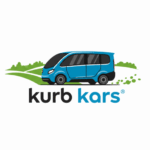
Executive Summary
To supplement the primary R&D funding streams from the Departments of Defense, Transportation, and the National Science Foundation, this report identifies a diverse portfolio of unconventional grant and funding opportunities. The strategy outlined below is to diversify applications by aligning Kurb Kars’ specific capabilities with the unique missions of niche federal agencies, state-level economic drivers, and private philanthropic organizations. This approach not only increases the probability of securing non-dilutive capital but also forges powerful strategic partnerships, opens new commercialization pathways, and validates Kurb Kars’ technology in a wide range of high-value markets.
1. Niche Federal Agencies: Mission-Specific Funding
Beyond the major R&D agencies, several federal departments have specific missions and grant programs that directly align with Kurb Kars’ operational focus.
a. Department of Energy (DOE) / ARPA-E
- Strategic Alignment: The DOE, particularly through its Advanced Research Projects Agency-Energy (ARPA-E), is focused on developing new technologies to improve energy efficiency and grid resilience. An autonomous, electric fleet operating in a rural area represents a complex energy management challenge—a perfect fit for DOE innovation funding.
- Potential Proposal Concepts:
- Rural Microgrid and Fleet Management: Propose developing an AI-powered platform to manage the charging and energy consumption of the NEMT fleet, potentially integrating with local renewable energy sources to create a transportation microgrid.
- Vehicle-to-Grid (V2G) for Rural Resilience: Frame the autonomous NEMT fleet as a mobile energy storage network. During emergencies or grid outages, the vehicle fleet could provide power back to critical facilities like clinics or communication hubs.
- Strategic Advantage: Securing DOE funding positions Kurb Kars as a key player in the future of sustainable transportation and rural energy resilience, opening collaborations with utility companies and energy tech firms.
b. Department of the Interior (DOI) & Bureau of Indian Affairs (BIA)
- Strategic Alignment: Kurb Kars operates in Arizona, home to 22 federally recognized Native American tribes. Many of these communities face profound transportation and healthcare access challenges. The DOI and BIA are mandated to support infrastructure and wellness on tribal lands.
- Potential Proposal Concepts:
- Tribal NEMT Pilot Program: Partner with a specific tribal nation to launch a culturally-sensitive autonomous NEMT service to transport elders and patients to Indian Health Service (IHS) clinics or other medical facilities.
- Autonomous Logistics for Tribal Enterprises: Provide automated transportation for tribal-run businesses, such as agriculture, tourism, or resource management, across vast and remote land areas.
- Strategic Advantage: This is a high-impact, mission-driven opportunity. A successful pilot could become a model for deployment across Indian Country, creating a massive, socially-beneficial market and a powerful sole-source contracting vehicle.
c. Department of Veterans Affairs (VA)
- Strategic Alignment: The VA runs one of the largest healthcare systems in the country and is committed to serving veterans, a significant number of whom live in rural areas and have service-related mobility issues. The VA has a dedicated innovation arm to pilot new technologies that improve veteran care.
- Potential Proposal Concepts:
- “Vets-to-VA” Autonomous Transport: Propose a pilot program at a specific VA hospital (like the one in Prescott, AZ) to provide reliable, autonomous transportation for veterans living in surrounding rural counties.
- Mobile Medical Unit Support: Use autonomous vehicles to support VA mobile medical units, transporting supplies, equipment, and even telehealth technicians to reach veterans in remote “last mile” locations.
- Strategic Advantage: The VA is a direct, large-scale customer. A successful pilot could lead to a nationwide deployment contract, providing a stable, long-term revenue stream.
2. State & Local Government: Economic & Community Development
Funding at the state and local level is often more accessible and directly tied to regional economic growth and problem-solving.
a. Arizona Commerce Authority (ACA)
- Strategic Alignment: The ACA is Arizona’s leading economic development organization. It provides grants and incentives to attract, grow, and create technology companies within the state, particularly in sectors like autonomous vehicles and healthcare.
- Potential Proposal Concepts:
- Applied Research & Development Grant: Apply for funding to partner with an Arizona state university (like ASU or U of A) to research and commercialize the non-satellite GPS or advanced sensor fusion technology, creating high-tech jobs in the state.
- Rural Economic Development Grant: Frame the expansion of the NEMT and logistics service as a direct enabler of rural economic growth, providing critical infrastructure that allows other businesses to thrive.
- Strategic Advantage: ACA funding provides strong in-state validation and connects Kurb Kars to the highest levels of Arizona’s business and political network.
3. Private, Philanthropic & Corporate Opportunities
This untapped sector provides funding from organizations focused on specific outcomes, from health equity to technological breakthroughs.
a. Healthcare Foundations (e.g., The Robert Wood Johnson Foundation, Flinn Foundation)
- Strategic Alignment: These foundations are dedicated to improving health outcomes and addressing health inequities. Transportation is a well-documented Social Determinant of Health (SDOH), and Kurb Kars offers a direct solution.
- Potential Proposal Concepts:
- “Transportation as a Health Intervention” Study: Propose a research study, funded by the foundation, to quantify the impact of reliable autonomous NEMT on missed appointment rates, chronic disease management, and overall healthcare costs in a specific rural population. The Flinn Foundation, being Arizona-focused, is a prime target.
- Strategic Advantage: Foundation-backed research provides invaluable third-party validation of Kurb Kars’ impact, which can be leveraged to secure contracts with insurance companies and large hospital networks.
b. Corporate Social Responsibility (CSR) & Venture Arms
- Strategic Alignment: Major corporations in the automotive, technology, and healthcare sectors have venture arms and CSR programs to fund innovation that aligns with their business.
- Intel / Waymo / GM: With major operations in Arizona, these companies are deeply invested in the future of autonomy. They could fund a Kurb Kars pilot as a real-world data-gathering or technology-testing platform.
- UnitedHealth Group / Blue Cross Blue Shield of AZ: These health insurance giants are incentivized to reduce long-term costs. They could fund a pilot NEMT program to prove the return-on-investment (ROI) from providing preventative transportation.
- Strategic Advantage: A corporate partnership provides not just capital but also technical expertise, strategic guidance, and a direct path to a major commercial contract.
c. Prize Competitions (e.g., XPRIZE, Schmidt Futures)
- Strategic Alignment: These organizations launch high-profile, high-reward competitions to solve “grand challenges.” Kurb Kars’ most ambitious goals are a perfect fit.
- Potential Proposal Concepts:
- XPRIZE for Resilient Navigation: A proposal to a future XPRIZE focused on autonomy or logistics could center on the challenge of navigating a 100km off-road course with no GPS, using only terrestrial and vehicle-based sensor data.
- Schmidt Futures for Social Impact: Apply for funding by framing the autonomous NEMT network as a transformative tool for global health equity that can be scaled from rural Arizona to developing nations.
- Strategic Advantage: Winning a prize competition provides unparalleled global publicity, attracting top-tier talent and investors.

